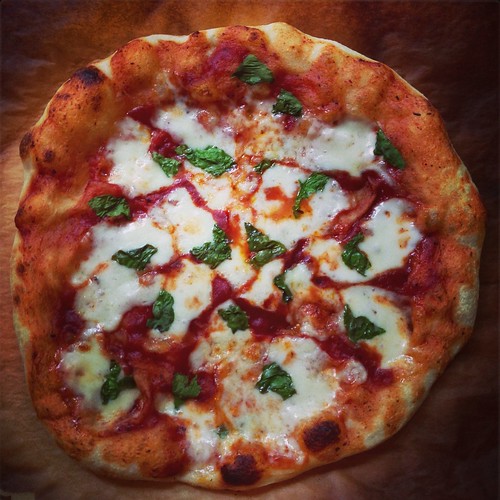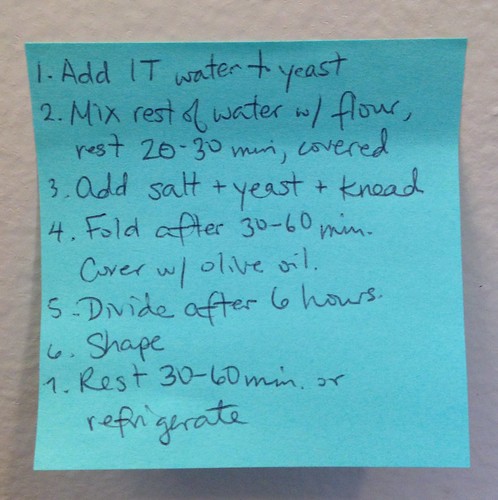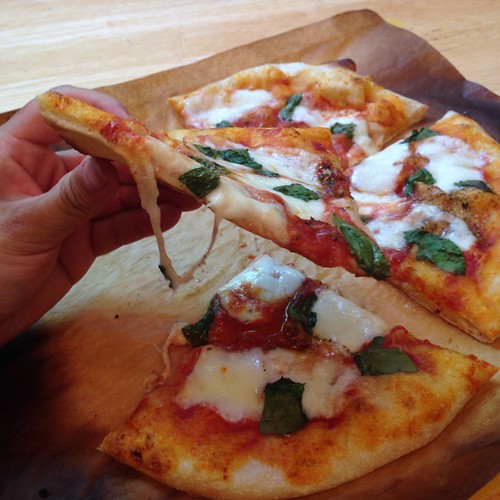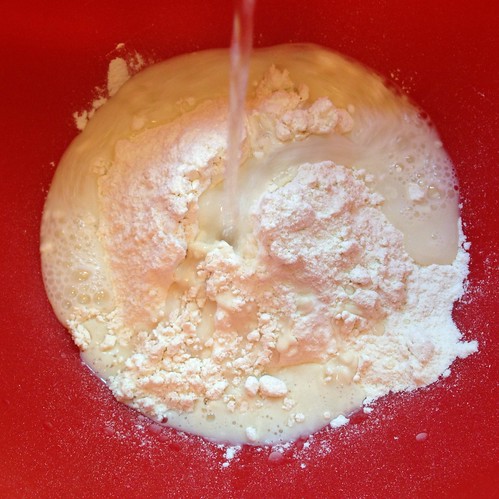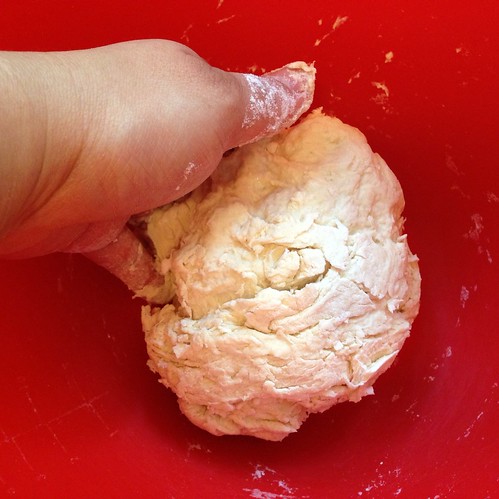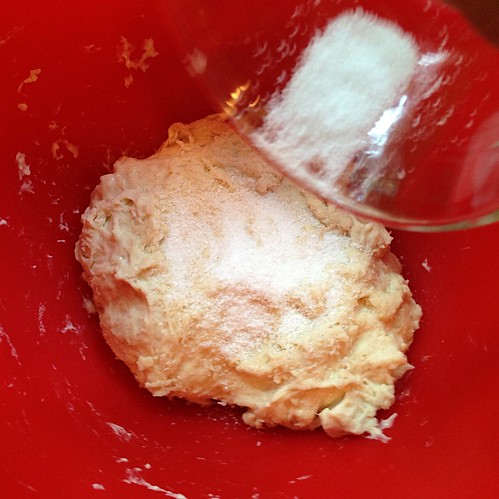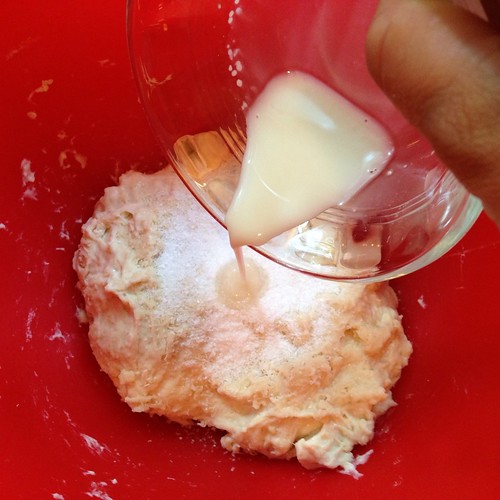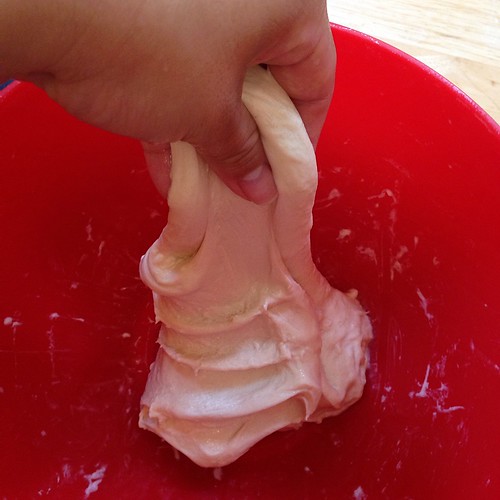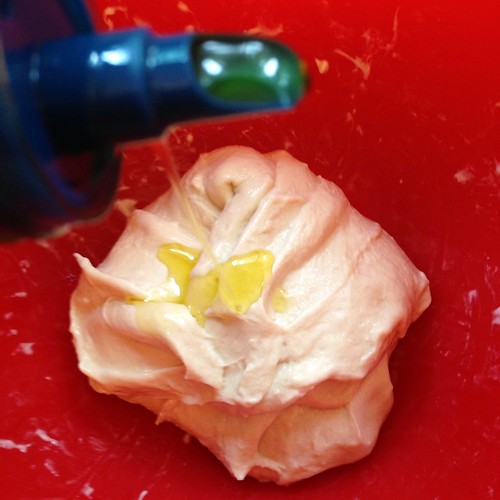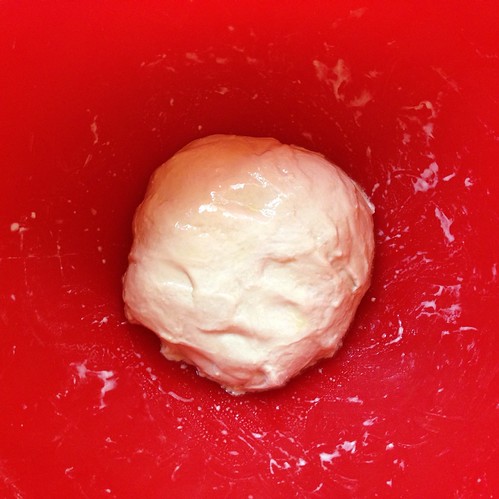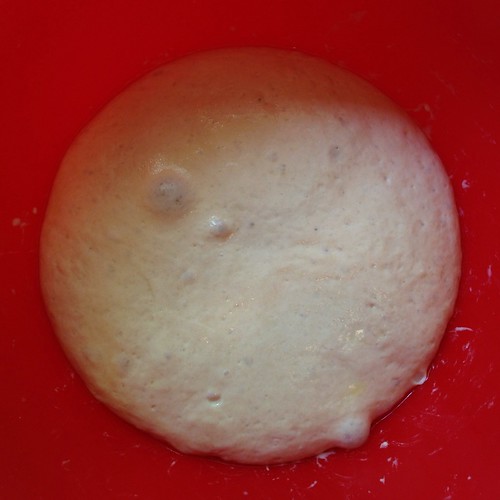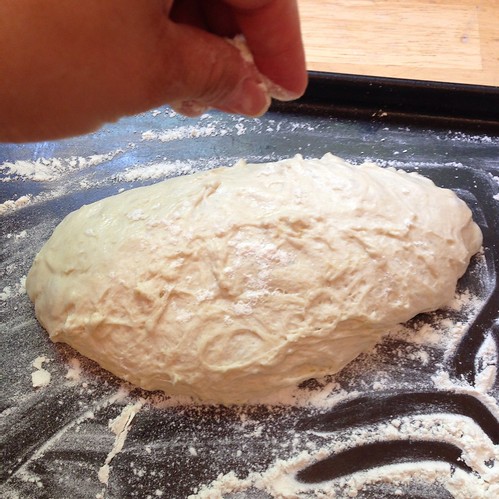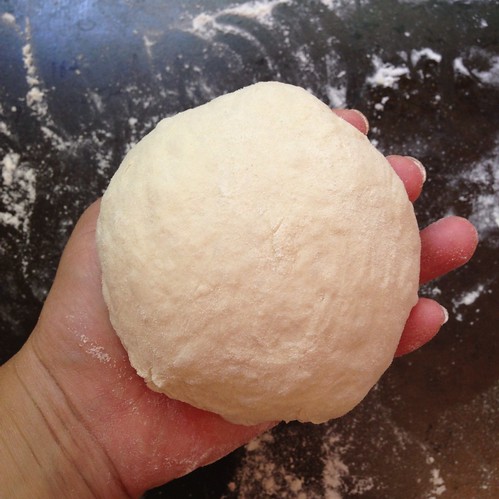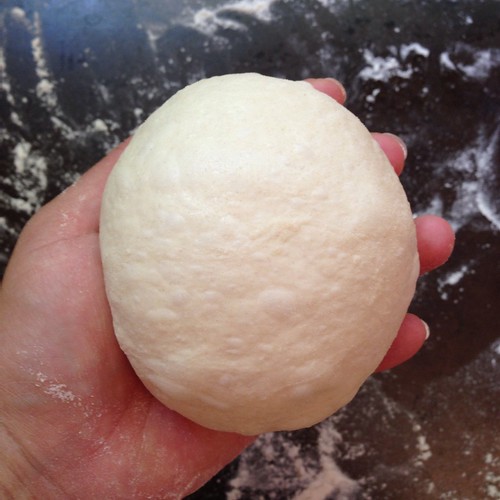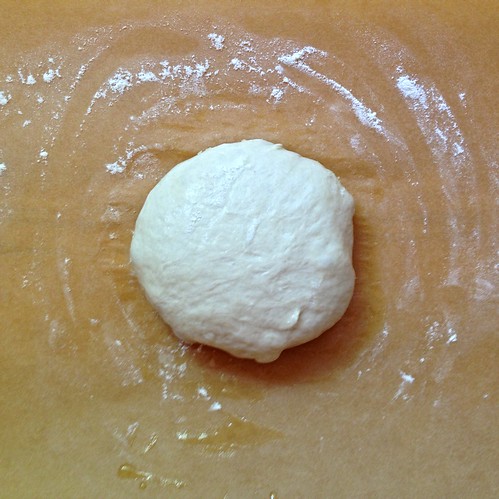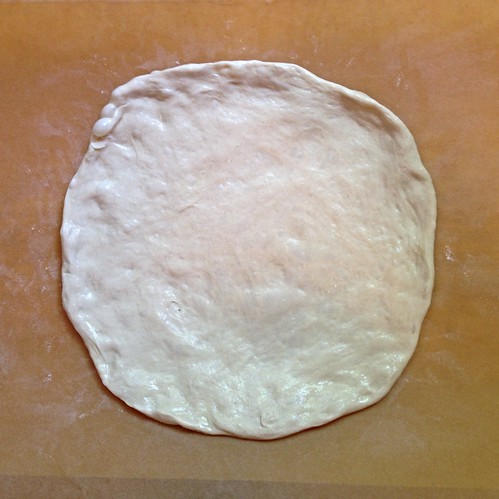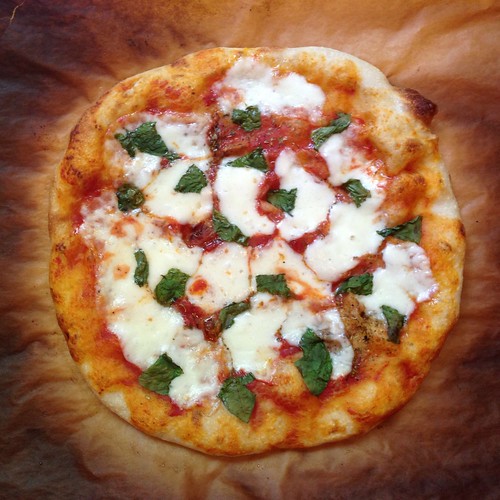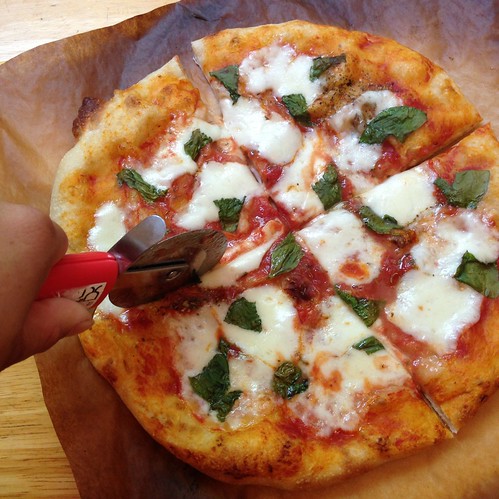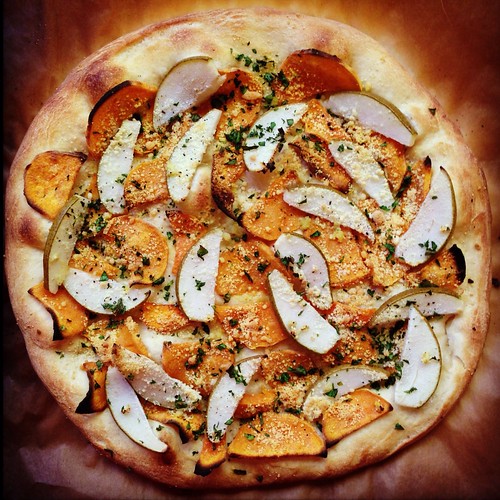I've been making pizzas at home for a while now and have been pretty content with the thin crust pizza dough recipe from The Kitchn. But one day on a whim, I decided to try the pizza dough recipe in Ken Forkish' Flour Water Salt Yeast cookbook, and now I can never go back.
Sure, making the dough is a little more fussy, but the difference is amazing; with this recipe you get a super-thin crust with a chewy, poofy crust just like in a restaurant! You can make the dough in the morning, shape it in the afternoon, and then make pizzas by early evening! And if you let the dough rest a day or two in the fridge, it develops a wonderful flavor that makes it more than worth the wait. After making this dough a few times, I feel like I've gotten the hang of it and just follow these 2 Post-Its:
Ken Forkish's Same-Day Straight Pizza Dough (adapted from Flour Water Salt Yeast)
makes two 8 oz. balls of pizza dough (enough for two 10" pizzas)
250 g (about 1 1/2 cups) all-purpose flour
175 g (about 3/4 cups) warm water, 90-95°F
5 g (about 2 teaspoons) kosher salt
0.5 g (about 1/8 teaspoon) instant dried yeast
Place the yeast and 1 tablespoon of the warm water in a small bowl and set aside.
Combine the flour and remaining warm water in a large bowl.
Mix by hand until just incorporated.
Cover and let rest for 20-30 minutes.
After it has rested, sprinkle the salt over the dough.
Stir the yeast mixture with your finger, then pour over the dough. Use a small piece of dough to wipe the remaining yeast goop from the small bowl, then add it back to the rest of the dough.
Mix by hand, wetting your working hand before mixing so the dough doesn't stick to you. (It's fine to rewet your hand three or four times while you mix.)
Reach underneath the dough and grab about one-quarter of it. Gently stretch this section of dough and fold it over the top to the other side of the dough. Repeat three more times with the remaining dough, until the salt and yeast are fully enclosed. This process is called applying a fold.
Continue to mix the dough by alternating folding and pinching the dough with your fingers to simulate the motion performed by a dough hook when using a stand up mixer. (I suppose you could just use a stand up mixer to knead the dough, but it really only takes me a few minutes, and the dough is so soft by this point that it's not a big deal at all). Once all the ingredients have been fully incorporated, and you can't feel the grains of salt in the dough, cover and let rest.
After 30-60 minutes, apply a fold to the dough to help develop the gluten.
After folding, lightly coat the dough and the bottom of the bowl with olive oil to help prevent sticking.
Cover and let rest until the dough is about double its original volume, about 6 hours after mixing.
Moderately flour a work surface. With floured hands, gently ease the dough out of the bowl onto the work surface in a somewhat even shape.
Dust the entire top of the dough with flour, then cut it into 2 equal-size pieces.
To shape the dough, apply a fold to each piece and then turn upside-down to seal the seam underneath.
Cradle the dough in both hands and gently stretch the dough from the top towards the sides and then under, rotating several times so that there is a nice, tight, even tension around the dough ball. Try not to degas the dough while doing this.
At this point I transfer each ball of dough to its own sandwich bag, dribble in a little olive oil to coat, and let it rest in the fridge overnight, up to 2 days. If you want to use it that day, let it rest at room temperature for 30-60 minutes and then refrigerate for at least 30 minutes to make the dough easier to shape.
When you're ready to use the pizza dough, place a pizza stone in the upper portion of your oven (about 8" below the broiler) and preheat to 600°F or as high as your oven can go (mine only goes to 550°F). After it has preheated, continue heating the pizza stone for another 30 minutes.
Cover a peel or cutting board with parchment paper and lightly flour. Remove the dough ball from the fridge and put it on the floured parchment paper. Gently pat it down a bit to coat the bottom with flour. Leaving about 1"of the outer rim undeflated, punch down the middle, then flip the dough over and repeat.
Using both hands, grab the rim and lift the dough so it hangs down vertically. Let gravity pull the rest of the dough down and stretch it. Run the rim between your hands, working all the way around the circumference of the dough several times. Start stretching the rim between your hands while continuing to turn the dough, still letting the bottom of the dough pull down, expanding the surface. Keep a close eye on the thickness of the dough; you want it thin, but you don't want it to tear or develop holes.
Spread the dough on the floured parchment paper and run your hands around the perimeter to shape it into a round and work out the kinks. Top the pizza with your desired toppings.
Gently slide the pizza with the parchment paper onto the pizza stone. Bake for 5 minutes, then switch to the broil setting and broil for 2 minutes, keeping a close eye on the pizza.
The pizza above is a margherita pizza, which I learned in Rome was named after Queen Margherita. The colors in the pizza--red, white, and green--are reflected in the Italian national flag.
Here's another pizza I've made from Flour Water Salt Yeast; this one is a pear and sweet potato pizza:
Here's the crispy kale pizza I've made in the past using this new pizza dough:
And here's the mashed potato pizza using this new dough:
Next: Bubble Tea Popsicles
Previously: Passion Fruit Macarons
Three years ago: Bruschetta
